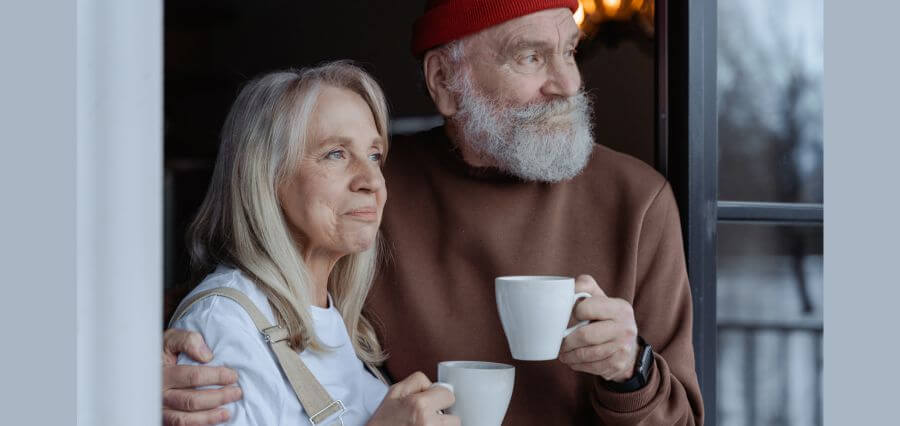Navigating healthcare can be challenging, especially as you or your loved ones grow older in urban areas. It’s no secret that access to quality healthcare is a universal concern. But when it comes to seniors living in urban senior-only households, the challenge becomes uniquely complex.
You might be worried about the elderly members of your family living in the heart of the city, facing barriers to essential healthcare services.
In this article, we will try to address these concerns head-on. We will delve into the specific access challenges these seniors face. Also, we will discover how equitable community care for seniors in urban settings is possible and why it’s vital for aging populations.
Understanding the Urban Senior-Only Household Landscape
To tackle the access challenges faced by seniors in urban senior-only households, it’s crucial to understand the unique landscape they inhabit. These households are specialized living arrangements catering exclusively to older adults, usually aged 55 or older. They often offer communal spaces, activities, and services tailored to seniors’ needs.
One characteristic of these households is their prime urban locations. They’re typically situated in the heart of the city or in proximity to urban amenities, which can be convenient. However, this proximity to city life can also be a double-edged sword. While it offers access to entertainment and cultural activities, it can pose challenges regarding healthcare.
Transportation can be a significant hurdle. Many seniors in these households may no longer drive or have limited mobility, making it difficult to reach healthcare facilities. Public transportation might not always be readily available or suitable for their needs.
Identifying Access Challenges
One significant challenge is the limited availability of healthcare services within these communities. While these households often provide some healthcare support, they may not have comprehensive medical facilities. Additionally, seniors in these urban settings might face isolation. The urban environment, while vibrant, can also be lonely, with limited social interactions and support systems.
Lastly, financial constraints can further complicate access. Even if healthcare services are available, some seniors might struggle to afford them due to fixed incomes or inadequate insurance coverage.
According to NCOA, more than 16 million US citizens age 65 and older experience financial instability. Their income is below or at 200% of the national poverty line. This financial hardship led to increased housing and healthcare costs, poor nutrition, limited access to transportation, declining savings, and unemployment. As a result, it is more difficult for them to obtain all the facilities they want.
The Impact of Access Disparities
Firstly, access disparities can lead to poorer health outcomes. When seniors cannot readily access healthcare services, they may neglect preventive care or not seek timely treatment for health issues. It can lead to the progression of diseases, increased pain, and, in severe cases, hospitalization.
Moreover, limited access can take a toll on seniors’ mental health. The frustration and anxiety stemming from navigating a complex healthcare system or facing transportation obstacles can lead to feelings of helplessness.
Furthermore, communities as a whole are impacted when access disparities persist. Healthier seniors contribute to more vibrant and engaged communities, whereas unaddressed health issues can strain social services and increase overall healthcare costs.
Innovative Solutions and Programs
An effective method involves telehealth services, enabling seniors to consult with healthcare providers remotely. It reduces travel and enhances accessibility. Another innovation is mobile healthcare clinics, which bring medical services to senior homes, benefiting those with mobility challenges.
Moreover, community-based programs are also gaining traction. According to The New York Times post, a new approach to senior housing is in process. Bill Thomas, the pioneer in innovative elder living, has designed Kallimos Communities that offer intergenerational settlements of fifty to sixty smaller houses.
It also includes communal areas with program staff who will organize communal meals plus social events. In Loveland, Colorado, where Kallimos is collaborating with a municipal housing authority, intends to begin construction in 2024.
These initiatives aim to create a supportive network within urban senior-only households, offering transportation assistance, social activities, and access to essential services, including healthcare.
Technology & Education of a Facilitator
In today’s digital age, technology offers tremendous potential. Many seniors now have access to smartphones and tablets. These devices can be a gateway to telehealth services, allowing seniors to consult with healthcare specialists without leaving their homes.
However, to harness this potential, education is key. Seniors need guidance and support to use these technologies effectively. It is where a facilitator with a post-graduate degree or doctorate in health education can significantly impact. Their expertise in healthcare education can empower seniors with the knowledge and skills to navigate telehealth platforms.
Also, they help them understand their health conditions and make informed decisions about their care. They can bridge the digital divide by providing personalized training and support tailored to the unique needs of seniors.
Furthermore, Rockhurst University states that the curriculum uses the skills and expertise in the healthcare industry with unique teaching strategies. Facilitators also learn how to create program assessment plans that follow accreditation procedures. Additionally, they will be equipped with the specific knowledge needed to solve the shortfall of health educators and mentor the following generation of specialists.
Promoting Awareness and Education
Promoting awareness and education is crucial in addressing access challenges for seniors living in urban senior-only households. According to a report by BMC, it was found that older individuals in society experienced several barriers when they requested assistance.
Additionally, they could not seek medical attention due to their social and physiological limitations. These issues were made worse by the lack of coordination and clear direction in delivering proper community care. Therefore, the visibility and reach of facilities for older individuals should be the main emphasis of care service reform.
Community outreach initiatives are one approach to sort out the issues. These programs can include informational sessions, workshops, and events that educate seniors on accessing them. It conveys the benefits of staying engaged with their health.
Furthermore, family members and caregivers also play a vital role in promoting awareness. They can act as advocates for seniors, ensuring they are aware of available healthcare resources and assisting them in navigating the system.
Looking Ahead: Ensuring Equitable Care
As the urban population ages, it must proactively address access challenges to safeguard the well-being of elderly citizens. This journey involves multiple stakeholders, from healthcare providers to community organizations, government agencies, and, importantly, seniors themselves.
Collaboration is key. Healthcare facilities can tailor their services to meet the specific needs of seniors in urban settings, considering factors like transportation and location. Community organizations can continue to raise awareness and offer support.
| Read More Articles: Click Here |















